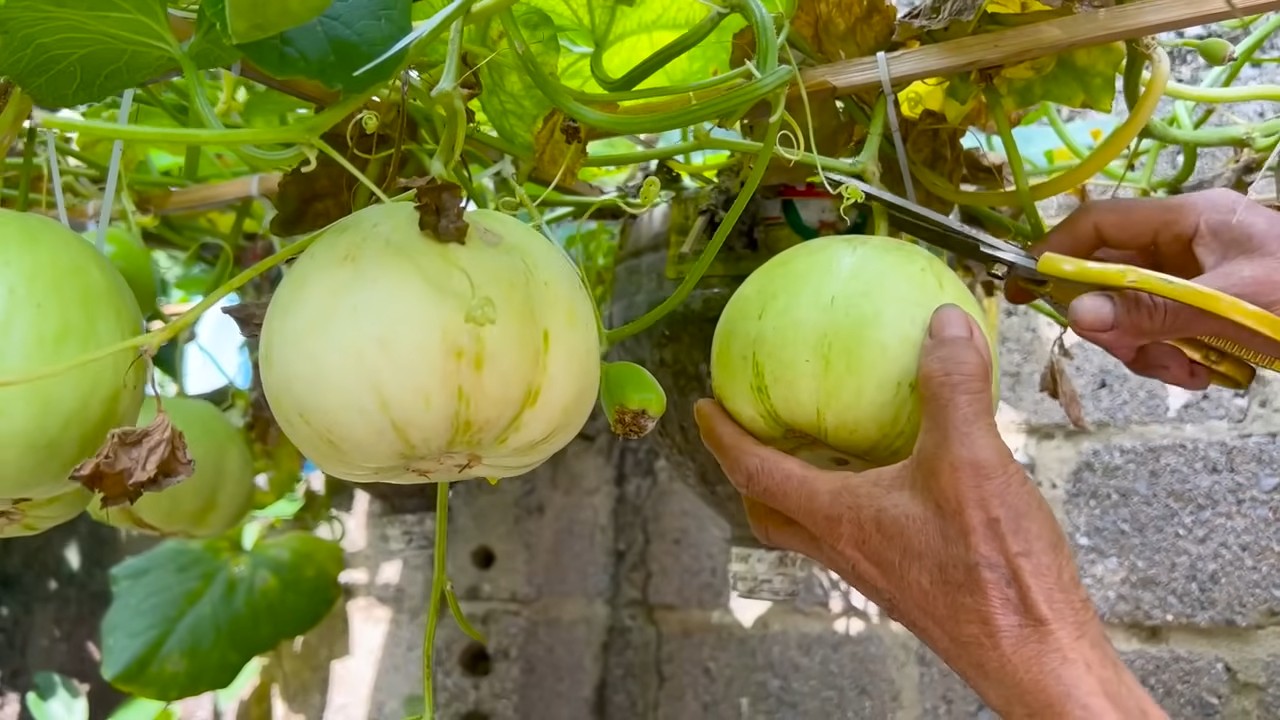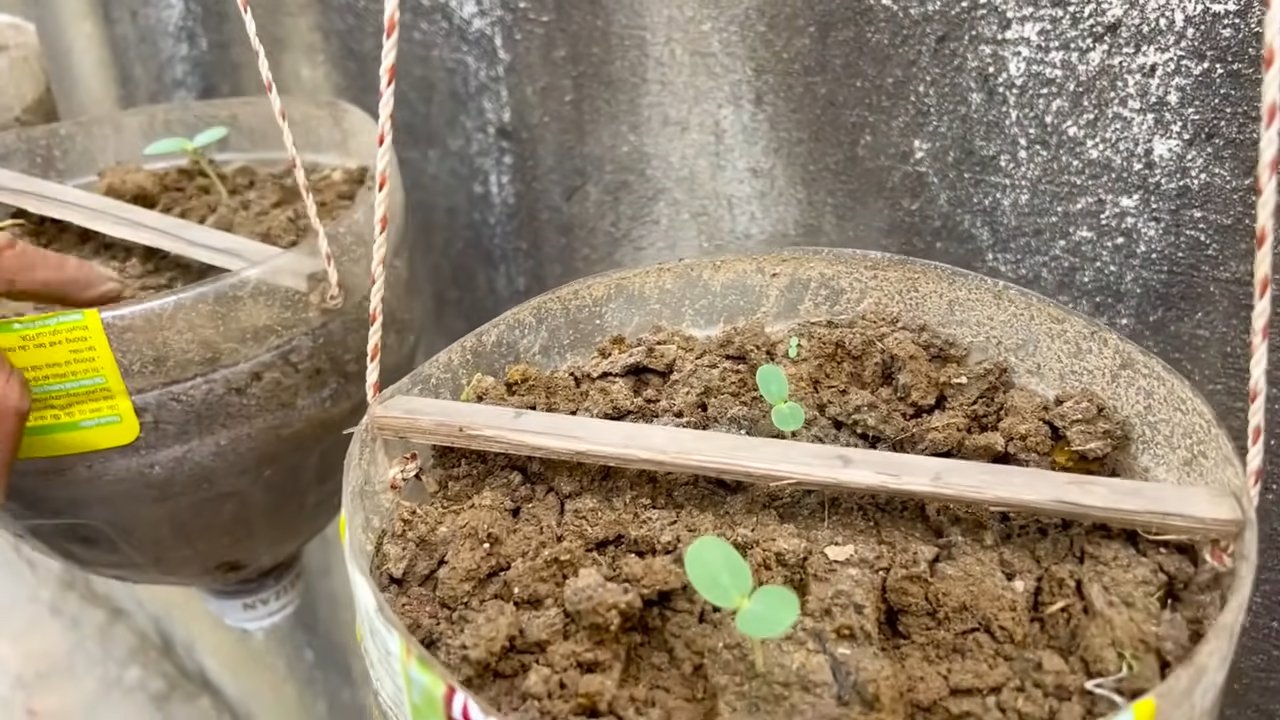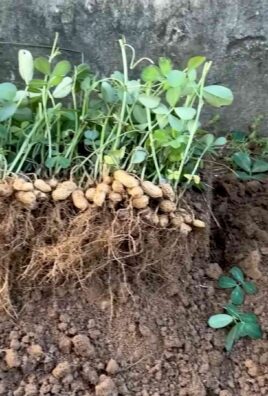Increase Melon Yield and prepare to be amazed by the bounty you can harvest from your very own backyard! Have you ever dreamed of biting into a juicy, perfectly ripe melon, bursting with flavor, knowing you nurtured it from seed to table? I know I have! But sometimes, despite our best efforts, our melon patches can be a little…underwhelming. That’s where these incredible DIY tricks and hacks come in.
For centuries, gardeners have sought ways to maximize their harvests. From ancient Egyptians cultivating watermelons along the Nile to Renaissance farmers perfecting cantaloupe varieties, the quest for bigger, better melons is a tale as old as agriculture itself. These time-tested techniques, combined with modern innovations, are the secret to unlocking your melon patch’s full potential.
Let’s face it, store-bought melons often lack the vibrant taste and satisfying texture of homegrown fruit. Plus, who wants to pay a premium for something you can grow yourself? This DIY guide is designed to empower you with the knowledge and skills to increase melon yield significantly. We’ll explore simple yet effective strategies, from optimizing pollination to providing the perfect nutrients, ensuring you’ll be swimming in sweet, delicious melons all season long. Get ready to transform your garden and impress your friends and family with your melon-growing prowess!

Maximize Your Melon Harvest: A DIY Guide to Bumper Crops!
Okay, melon lovers, let’s talk about getting serious about your melon game. I’m talking juicy, sweet, overflowing harvests that will make your neighbors green with envy. We’re going to dive deep into some DIY techniques that will significantly boost your melon yield. Get ready to roll up your sleeves and get your hands dirty!
Understanding Melon Needs: The Foundation for Success
Before we jump into the hacks, let’s quickly cover the basics. Melons are sun-worshippers and nutrient-hungry plants. They need:
* Full Sun: At least 6-8 hours of direct sunlight per day. No excuses!
* Well-Drained Soil: Melons hate soggy feet. Amend your soil with compost and other organic matter to improve drainage.
* Rich Soil: These guys are heavy feeders. We’ll talk about fertilization strategies later.
* Consistent Watering: Especially during fruit development.
* Warm Temperatures: Melons thrive in warm weather. Protect them from late frosts.
Now that we’ve got the fundamentals down, let’s get to the good stuff!
DIY Hack #1: The Trellis Technique for Vertical Growth
This is a game-changer, especially if you’re short on space. Training your melons to grow vertically on a trellis not only saves space but also improves air circulation, reducing the risk of fungal diseases. Plus, it looks pretty darn cool!
Materials You’ll Need:
* Sturdy trellis (cattle panels, wooden trellis, or even a strong fence will work)
* Soft plant ties or strips of cloth
* Sharp pruning shears
Step-by-Step Instructions:
1. Prepare Your Trellis: Position your trellis near your melon plants. Make sure it’s securely anchored in the ground. You don’t want it collapsing under the weight of those melons!
2. Guide the Vines: As your melon vines grow, gently guide them towards the trellis. Use plant ties or strips of cloth to loosely attach the vines to the trellis. Don’t tie them too tightly, as this can damage the stems.
3. Prune as Needed: Prune away any excessive side shoots or leaves that are blocking sunlight from reaching the developing melons. This will help the plant focus its energy on fruit production.
4. Support the Melons: As the melons grow larger, they’ll need extra support. You can use slings made from pantyhose, netting, or even old t-shirts to cradle the melons and prevent them from breaking off the vine. Tie the slings to the trellis for added security. I’ve found that pantyhose works really well because it stretches and conforms to the shape of the melon.
5. Monitor and Adjust: Keep an eye on your melon plants and adjust the ties and slings as needed. Make sure the vines are securely attached to the trellis and that the melons are adequately supported.
DIY Hack #2: The Epsom Salt Boost for Sweetness and Yield
Epsom salt (magnesium sulfate) is a gardener’s secret weapon. Magnesium is essential for chlorophyll production, which is crucial for photosynthesis. It also helps plants absorb other nutrients, like nitrogen and phosphorus. Using Epsom salt can lead to sweeter, more abundant melons.
Materials You’ll Need:
* Epsom salt
* Watering can or hose-end sprayer
Step-by-Step Instructions:
1. First Application: When your melon plants start to bloom, dissolve 1 tablespoon of Epsom salt in 1 gallon of water. Water the plants thoroughly with this solution.
2. Second Application: Repeat the application when the melons start to develop. Again, dissolve 1 tablespoon of Epsom salt in 1 gallon of water and water the plants thoroughly.
3. Foliar Spray (Optional): For an extra boost, you can also use Epsom salt as a foliar spray. Dissolve 1 teaspoon of Epsom salt in 1 gallon of water and spray the leaves of the plants in the early morning or late evening. Avoid spraying during the hottest part of the day, as this can cause leaf burn. I personally prefer watering the soil directly, but the foliar spray can be a quick way to deliver magnesium to the plants.
Important Note: Don’t overdo it with the Epsom salt. Too much magnesium can interfere with the uptake of other nutrients. Stick to the recommended dosage.
DIY Hack #3: The Hand-Pollination Technique for Guaranteed Fruit Set
Sometimes, nature needs a little help. If you’re not seeing a lot of bees or other pollinators in your garden, you can hand-pollinate your melon flowers to ensure fruit set. This is especially important for varieties that require cross-pollination.
Materials You’ll Need:
* Small paintbrush or cotton swab
Step-by-Step Instructions:
1. Identify Male and Female Flowers: Melon plants have separate male and female flowers. Male flowers have a long, thin stem, while female flowers have a small, immature melon at the base of the flower.
2. Collect Pollen: In the early morning, use a small paintbrush or cotton swab to collect pollen from the male flowers. Gently brush the anthers (the pollen-bearing parts) of the male flower to collect the pollen.
3. Transfer Pollen: Transfer the pollen to the stigma (the sticky part) of the female flower. Gently brush the pollen onto the stigma, ensuring that it is well-covered.
4. Mark the Pollinated Flower: Use a small piece of ribbon or tape to mark the pollinated flower. This will help you keep track of which flowers you’ve already pollinated.
5. Repeat Daily: Repeat the hand-pollination process daily for several days to ensure that you pollinate all of the female flowers. I usually do this for about a week, just to be sure.
DIY Hack #4: The Strategic Pruning Method for Enhanced Growth
Pruning your melon plants can seem counterintuitive, but it can actually boost your yield by directing the plant’s energy towards fruit production.
Materials You’ll Need:
* Sharp pruning shears
Step-by-Step Instructions:
1. Remove Suckers: Suckers are small shoots that grow from the base of the plant. Remove these suckers as soon as you see them, as they will drain energy from the main vine.
2. Prune Lateral Vines: After the main vine has produced several melons, you can prune back some of the lateral vines (the side branches). This will help the plant focus its energy on ripening the existing melons.
3. Remove Yellowing Leaves: Remove any yellowing or diseased leaves, as they are no longer contributing to the plant’s health and can attract pests and diseases.
4. Pinch Back Growing Tips: Once the plant has set a good number of melons, pinch back the growing tips of the vines. This will encourage the plant to put its energy into ripening the existing melons rather than producing new growth.
DIY Hack #5: The Compost Tea Fertilizer for Nutrient-Rich Soil
Compost tea is a fantastic way to provide your melon plants with a boost of nutrients and beneficial microbes. It’s easy to make and incredibly effective.
Materials You’ll Need:
* Compost (well-rotted)
* 5-gallon bucket
* Water (non-chlorinated)
* Burlap sack or old pillowcase
* Airstone and aquarium pump (optional, but recommended)
Step-by-Step Instructions:
1. Fill the Bucket: Fill the 5-gallon bucket with water. Make sure the water is non-chlorinated, as chlorine can kill the beneficial microbes in the compost.
2. Add Compost: Place the compost in the burlap sack or old pillowcase and tie it closed. Submerge the sack in the bucket of water.
3. Aerate (Optional): If you have an airstone and aquarium pump, place the airstone in the bucket and turn on the pump. This will aerate the compost tea and encourage the growth of beneficial microbes.
4. Brew the Tea: Let the compost tea brew for 24-48 hours, stirring occasionally.
5. Dilute and Apply: Dilute the compost tea with water at a ratio of 1:10 (1 part compost tea to 10 parts water). Water your melon plants with the diluted compost tea, making sure to soak the soil around the base of the plants. I usually apply compost tea every 2-3 weeks.
DIY Hack #6: The Mulch Magic for Moisture Retention and Weed Control
Mulching is a simple but effective way to improve your melon yield. Mulch helps to retain moisture in the soil, suppress weeds, and regulate soil temperature.
Materials You’ll Need:
* Organic mulch (straw, wood chips, shredded leaves, or compost)
Step-by-Step Instructions:
1. Prepare the

Conclusion
So, there you have it! This simple, yet incredibly effective DIY trick to increase melon yield is a game-changer for any gardener, whether you’re a seasoned pro or just starting out. We’ve walked you through the process, highlighting the key steps and explaining the science behind why it works. But the real magic happens when you put it into practice.
Why is this a must-try? Because it addresses a fundamental challenge in melon cultivation: maximizing fruit production within a limited growing season. By strategically pruning and supporting your melon vines, you’re not only encouraging the plant to focus its energy on fewer, but larger and more flavorful fruits, but you’re also improving air circulation, reducing the risk of disease, and making harvesting a breeze. Imagine biting into a perfectly ripe, juicy melon that you nurtured to its full potential – that’s the reward waiting for you.
But don’t stop there! Experimentation is key to unlocking the full potential of this technique. Consider these variations:
* **Grafting:** For even more vigorous growth and disease resistance, explore grafting your melon plants onto stronger rootstocks. This is a more advanced technique, but the results can be truly remarkable.
* **Vertical Gardening:** If you’re short on space, train your melon vines to grow vertically on trellises or fences. This not only saves space but also improves air circulation and sunlight exposure.
* **Companion Planting:** Surround your melon plants with beneficial companion plants like marigolds, basil, or nasturtiums to deter pests and attract pollinators.
* Different Melon Varieties: This technique works well with various melon types, including cantaloupe, watermelon, and honeydew. Adjust the pruning and support methods based on the specific growth habits of each variety. For smaller melons like cantaloupe, you might need less support than for larger watermelons.
* Soil Amendments: Before planting, amend your soil with plenty of organic matter, such as compost or well-rotted manure. This will provide your melon plants with the nutrients they need to thrive and produce abundant fruit.
* Watering Techniques: Consistent and proper watering is crucial for melon growth. Use drip irrigation or soaker hoses to deliver water directly to the roots, avoiding wetting the foliage, which can lead to disease.
We’re confident that this DIY trick will transform your melon-growing experience. But we also know that every garden is unique, and what works for one person may not work for another. That’s why we encourage you to try it out, adapt it to your specific conditions, and share your results with us!
Head out to your garden, get your hands dirty, and witness the incredible power of this simple technique. We can’t wait to hear about your melon-growing success stories! Share your photos, tips, and experiences in the comments below. Let’s build a community of thriving melon growers!
Frequently Asked Questions (FAQ)
Q: What is the best time to start this DIY trick to increase melon yield?
A: The best time to start implementing this technique is shortly after the melon plants have established themselves and started to vine, typically when they are about 1-2 feet long. This allows you to train the vines early on and direct their growth. You want to start pruning before the plant puts too much energy into producing numerous small fruits. For most climates, this will be a few weeks after transplanting seedlings or after the seedlings have emerged if you are direct sowing. Keep a close eye on your plants and start the process as soon as you see vigorous vine growth.
Q: How often should I prune my melon vines?
A: Regular pruning is key to maintaining the desired shape and promoting fruit development. Aim to prune your melon vines every 1-2 weeks, removing any suckers or excessive foliage that is not contributing to fruit production. This will help the plant focus its energy on the remaining fruits. Be gentle and avoid removing too much foliage at once, as this can stress the plant.
Q: What kind of support should I use for my melon vines?
A: The type of support you use will depend on the size and weight of the melons you are growing. For smaller melons like cantaloupe, a simple trellis or netting may suffice. For larger watermelons, you will need a sturdier support system, such as a wooden frame or a strong metal trellis. You can also use slings made from fabric or netting to support individual melons as they grow larger. Ensure that the support system is strong enough to handle the weight of the mature melons.
Q: How do I know when my melons are ripe?
A: Determining ripeness varies depending on the melon variety. For cantaloupe, look for a change in color from green to tan or yellow, a fragrant aroma, and a slight give when you press on the blossom end. Watermelons are ripe when the tendril closest to the fruit turns brown and dry, and the underside of the melon turns from white to yellow. Honeydew melons are ripe when the skin turns creamy yellow and the blossom end is slightly soft. Always research the specific characteristics of your melon variety to ensure you harvest at the peak of ripeness.
Q: Can I use this technique for all types of melons?
A: Yes, this technique can be adapted for most types of melons, including cantaloupe, watermelon, honeydew, and muskmelon. However, you may need to adjust the pruning and support methods based on the specific growth habits of each variety. For example, smaller melons may require less support than larger watermelons. Experiment and observe how your plants respond to the pruning and training techniques.
Q: What if I don’t have a lot of space for growing melons?
A: Even if you have limited space, you can still grow melons using vertical gardening techniques. Train your melon vines to grow up trellises, fences, or even walls. This not only saves space but also improves air circulation and sunlight exposure. Choose smaller melon varieties that are well-suited for vertical growing.
Q: What are some common pests and diseases that affect melon plants?
A: Common pests that affect melon plants include aphids, squash bugs, and vine borers. Common diseases include powdery mildew, downy mildew, and fusarium wilt. Regularly inspect your plants for signs of pests or diseases and take appropriate action, such as using insecticidal soap or fungicide. Good air circulation and proper watering techniques can also help prevent disease.
Q: How important is soil quality for melon growth?
A: Soil quality is extremely important for melon growth. Melons prefer well-drained soil that is rich in organic matter. Before planting, amend your soil with plenty of compost or well-rotted manure. This will provide your melon plants with the nutrients they need to thrive and produce abundant fruit. Consider getting a soil test to determine the pH and nutrient levels of your soil and amend accordingly.
Q: What are the benefits of companion planting for melons?
A: Companion planting can provide several benefits for melon plants, including pest control, pollination, and improved growth. Some good companion plants for melons include marigolds, basil, nasturtiums, and radishes. Marigolds deter nematodes and other soil pests, while basil repels aphids and other insects. Nasturtiums attract beneficial insects that prey on pests, and radishes can help break up the soil and improve drainage.
Q: How does this DIY trick specifically *increase melon yield*?
A: This DIY trick increases melon yield by directing the plant’s energy towards producing fewer, but larger and higher-quality fruits. By pruning away excess foliage and non-fruit-bearing vines, you reduce competition for resources like sunlight, water, and nutrients. This allows the plant to focus its energy on developing the remaining fruits, resulting in a higher overall yield of marketable melons. Additionally, improved air circulation and sunlight exposure reduce the risk of disease, further contributing to increased yield. The support system also prevents fruits from rotting on the ground, maximizing the harvest.





Leave a Comment